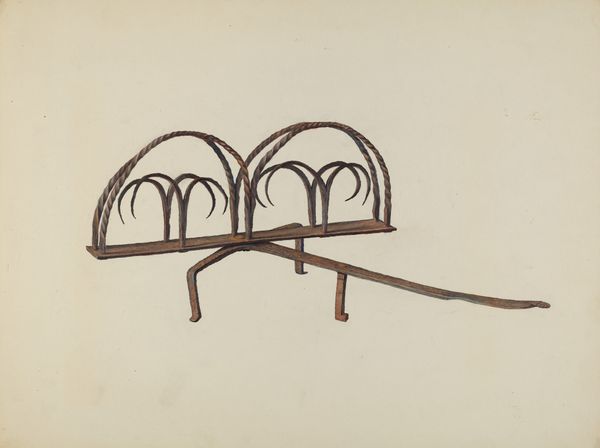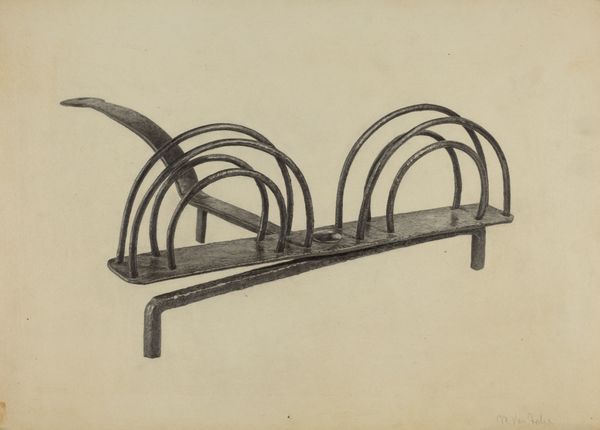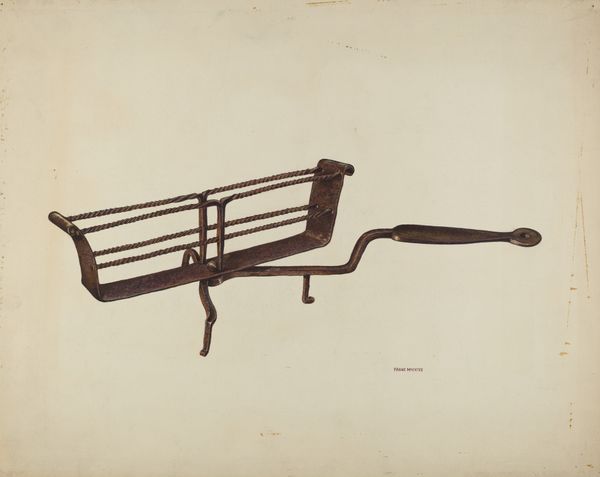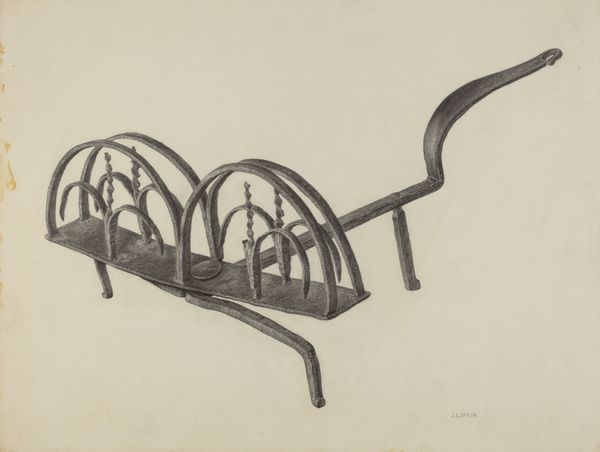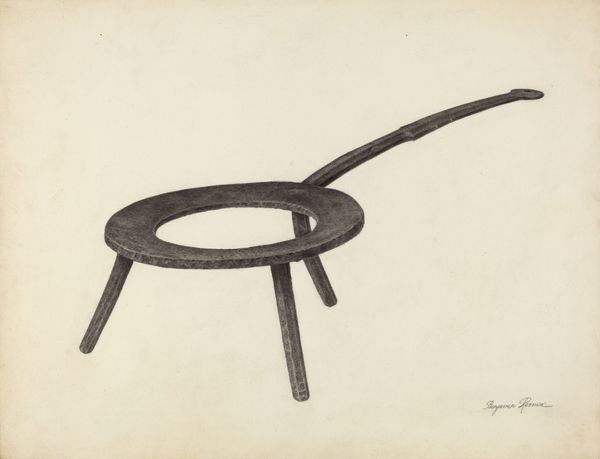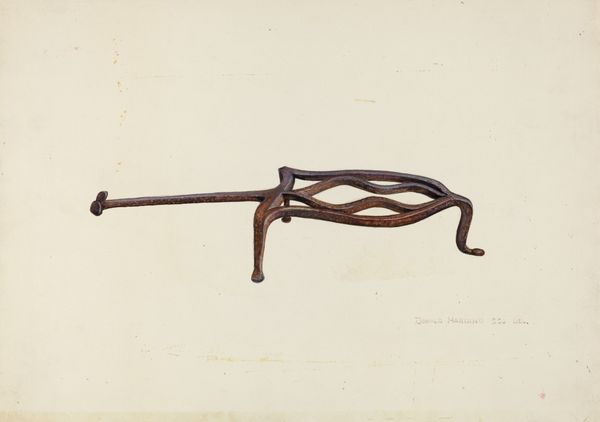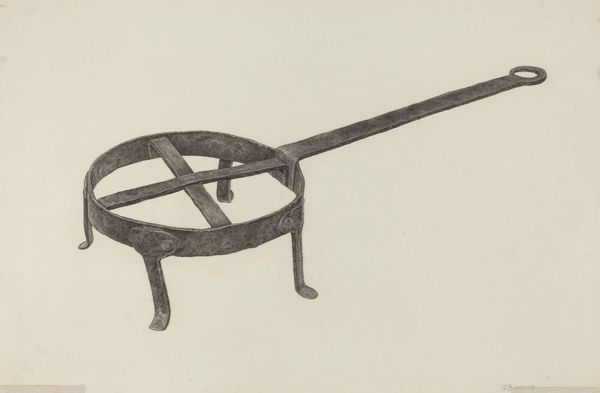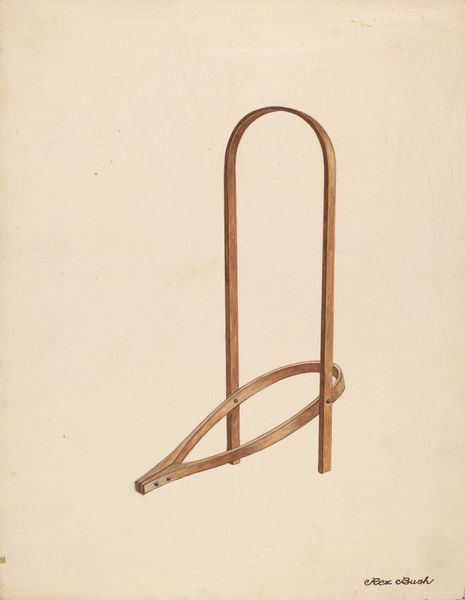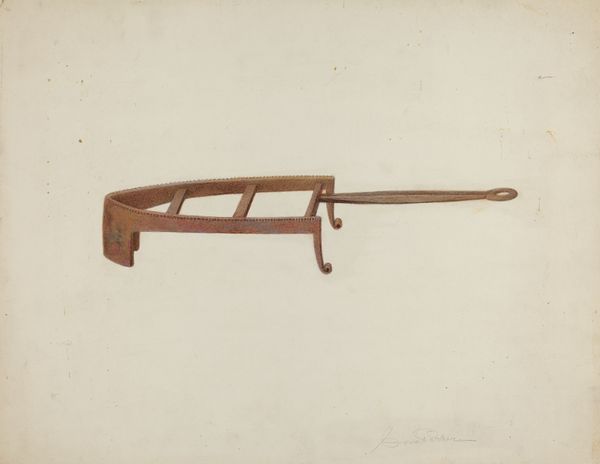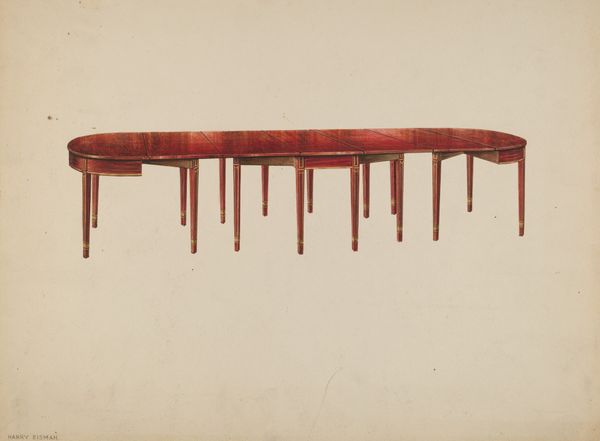
drawing, metal, watercolor
#
drawing
#
metal
#
watercolor
#
watercolour illustration
Dimensions: overall: 22.9 x 35.7 cm (9 x 14 1/16 in.) Original IAD Object: 17 1/4" long; 13" wide
Copyright: National Gallery of Art: CC0 1.0
Curator: This watercolour and metal drawing is titled "Toaster" and was completed between 1935 and 1942 by Roy Weber. The drawing on textured paper isolates an early type of toaster on a light, creamy background. Editor: It feels… almost austere. Stark simplicity. It's devoid of the glitz often associated with commercial products, especially in that era. The light seems to drain away the metallic luster. Curator: It invites us to consider the cultural symbolism of such an everyday object. In the mid-20th century, mass-produced objects offered an appealing modern domesticity, promising ease and perhaps upward mobility. Editor: I’m immediately drawn to the raw, almost medieval look of this object. The metalwork appears hand-wrought, lacking any industrial sheen. I imagine the artisan shaping each curve of the metal, unlike the uniform stampings of a factory. This isn’t mass consumption, this is human creation. Curator: Note how the repeated arch shape may imply sunrise. The form elevates function by alluding to regeneration, and the primal process of using heat or flame to improve taste and sustenance. In some ancient traditions fire represents insight. Toasting transforms. Editor: That handle just looks awkward to manipulate with one hand—toasting required dedication! It feels far removed from our push-button conveniences today. I wonder about the social dynamics around early toasters—the labor invested in bread preparation itself before this, and the person operating it, the heat…it speaks of another pace of life. Curator: Weber encourages us to look beyond its utility and think about broader associations – technology entering the home, the expansion of electricity. It prompts contemplation regarding our relationship to commonplace technologies then and now. Editor: I never thought I would analyze the material and meaning of a toaster but that’s part of its beauty, isn't it? To reveal a lost history. Curator: Indeed. Thank you for unpacking these deeper ideas about such a familiar symbol. Editor: My pleasure. The real beauty of art often rests with these hidden connections to materials and human activity.
Comments
No comments
Be the first to comment and join the conversation on the ultimate creative platform.
